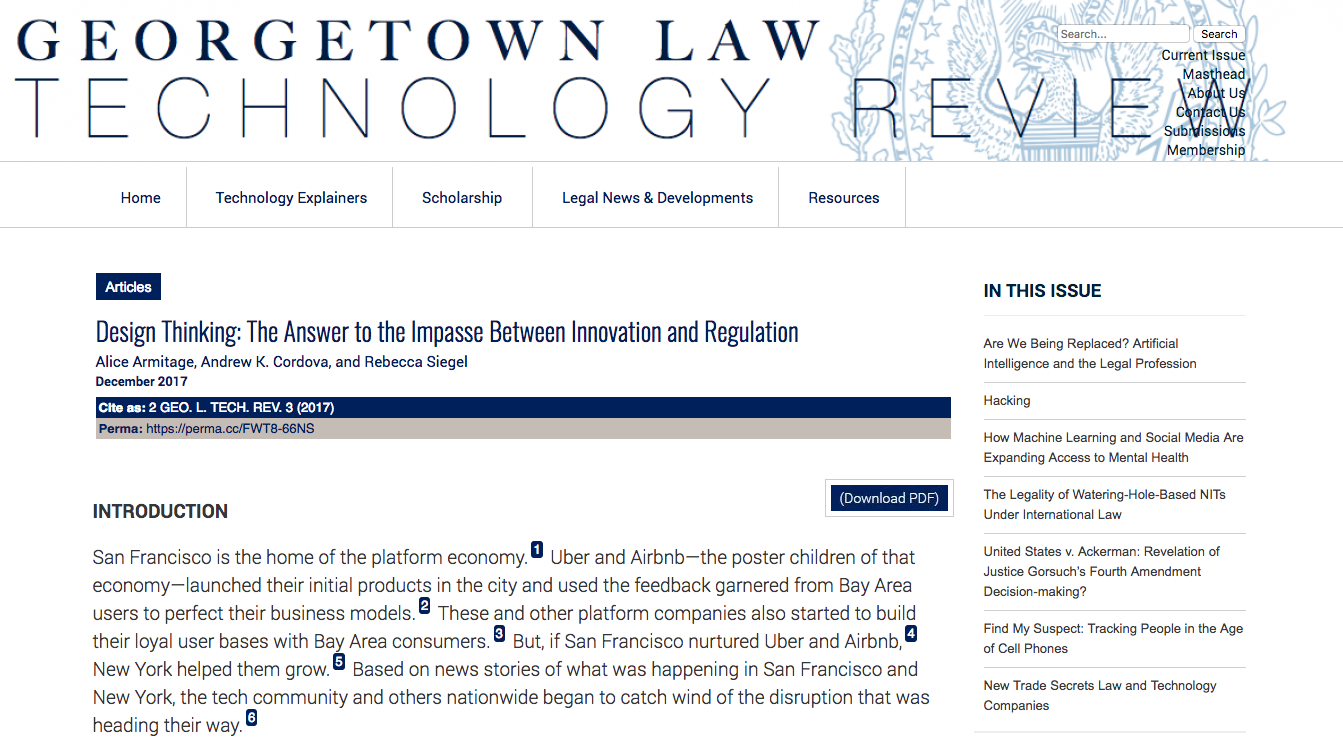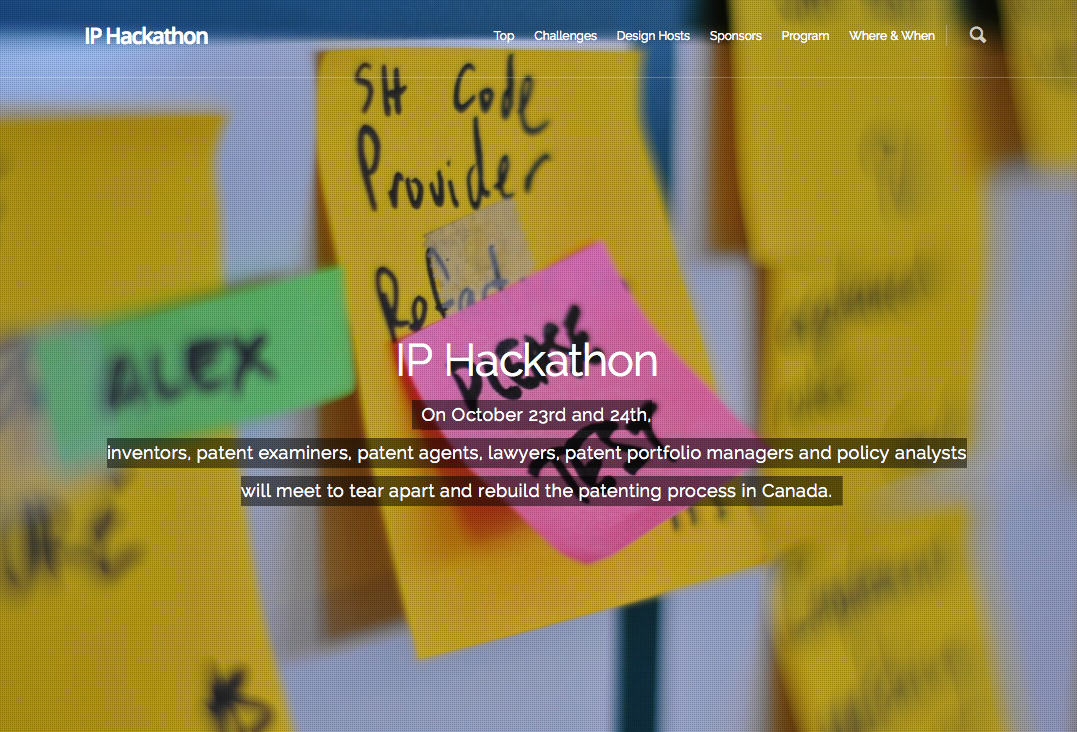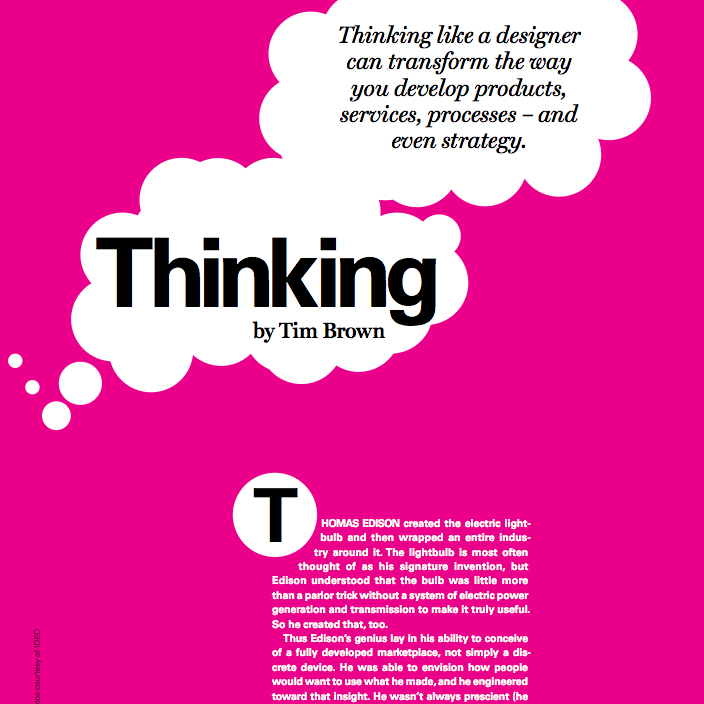Georgetown Law’s Technology Review published an article in December 2017, Design Thinking: The Answer to the Impasse Between Innovation and Regulation, by Alice Armitage, Andrew Cordova, and Rebecca Siegel. It discusses how policy and regulation can be set in better ways — using design thinking — to allow for more responsive and innovation-friendly outcomes.
Here’s the introduction:
San Francisco is the home of the platform economy.1 Uber and Airbnb—the poster children of that economy—launched their initial products in the city and used the feedback garnered from Bay Area users to perfect their business models.2 These and other platform companies also started to build their loyal user bases with Bay Area consumers.3 But, if San Francisco nurtured Uber and Airbnb,4 New York helped them grow.5 Based on news stories of what was happening in San Francisco and New York, the tech community and others nationwide began to catch wind of the disruption that was heading their way.6
This disruption would not just involve new products and services affecting existing businesses. It would also serve as notice of the regulatory challenges that followed the entry of Uber and Airbnb into each new market. Government officials in California and the state of New York made national headlines as they struggled to apply existing consumer protections and licensing fees to these innovative services.7 In many ways, the states of California and New York and the cities of San Francisco and New York became crucibles for the development of regulatory policies to govern companies such as Uber and Airbnb. These solutions were often used as templates in other jurisdictions.8 Nevertheless, it has been anything but a smooth process for government officials, entrepreneurs, or consumers. Headlines about the ongoing battles fill news feeds even now, almost 10 years after Uber and Airbnb were founded.9
This article begins by examining how the different characteristics and cultures of Silicon Valley and City Hall set the scene for the confrontations to come. With that context in mind, we dive into the specifics of the battles between Uber and Airbnb on one side and California and New York regulators on the other. Those specifics help to illuminate why and how the current regulatory system is ill equipped to achieve its goals—consumer safety, competitive fairness, and nondiscrimination, among others10—while also supporting innovation and technological change.
These regulatory struggles have harmed everyone involved. Consumers have not been fully protected as they try out platform company services; regulators and policymakers have spent untold hours and government funds attempting to enforce existing regulations; and Uber and Airbnb have paid huge fees, penalties, and litigation costs as their battles have moved to the courts.11 Moreover, society in general is harmed as important policy and economic goals are often lost on the battleground of innovation versus regulation.12
These issues are not new. Regulatory history is replete with examples of innovative businesses in high demand by consumers—think railroads, telephone, and airlines13—that regulators took “command” of to ensure consumer safety and prevent price gouging and other unfair business practices. After decades of use, many of these regulations failed to function effectively as business and society changed. In response, all these industries were ultimately deregulated, creating another set of problems. Is there no other path for innovative, high-growth businesses other than strictly regulated or unregulated? In this article, we posit that there is.
In Part I, we discuss how regulators and platform companies arrived at this point of tension. In Part II, we detail how regulators’ attempts to control Uber and Airbnb resulted in harm to both sides. In Part III, we suggest a better way to regulate innovative companies.
We know that new disruptive technologies are just around the corner whether they are autonomous vehicles, smart contracts on blockchain platforms, ambient artificial intelligence systems in our homes and cars, or something yet to be envisioned. How do we prepare to regulate technology we do not really understand yet? We argue that this can be achieved by creating a collaborative, flexible, nimble process of regulation that involves all industry and regulatory stakeholders. In current models of regulation, this is not possible,14 but in Part III, we explore whether there is a way to create a different regulatory process by utilizing principles of design thinking, a method that has proven its worth in product design, system design, and infrastructure design, and is now making its way into the processes of government.15 We provide an understanding of design thinking in general and then detail the steps involved to create a new regulatory process using design thinking.16 By putting such a regulatory process in place, consumers and innovative businesses will know that both society’s best interests and innovation will be supported regardless of when the next disruption appears.



